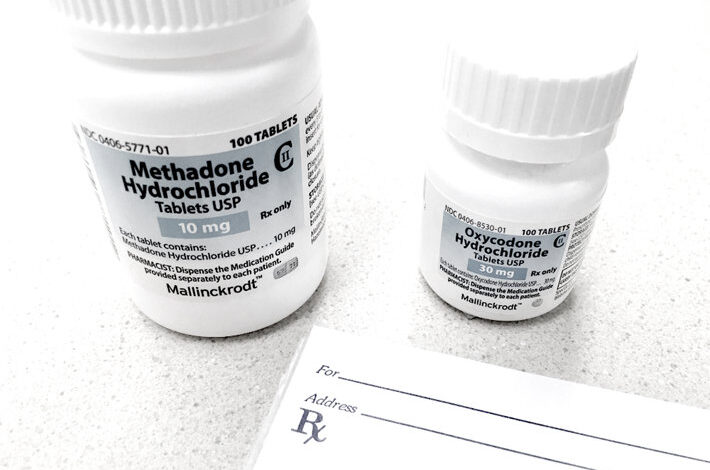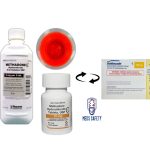Methadone: History, Uses, Side Effects, Abuse

Methadone belongs to a class of medications called opiate (narcotic) analgesics. Methadone works to treat pain by changing the way the brain and nervous system respond to pain. It works to treat people who were addicted to opiate drugs by producing similar effects and preventing withdrawal symptoms in people who have stopped using these drugs.
Methadone is used to relieve severe pain in people who are expected to need pain medication around the clock for a long time and who cannot be treated with other medications. It also is used to prevent withdrawal symptoms in patients who were addicted to opiate drugs and are enrolled in treatment programs in order to stop taking or continue not taking the drugs.
History
Methadone has a significant history in the field of addiction treatment. Here are some key points about the history of methadone:
• Development: Methadone was first synthesized in Germany in the late 1930s by scientists searching for a less addictive and safer alternative to morphine. It was developed by Max Bockmühl and Gustav Ehrhart at the pharmaceutical company I.G. Farbenindustrie AG.
• World War II: During World War II, methadone’s potential as an analgesic and substitute for morphine became recognized. German forces used it extensively as a painkiller for wounded soldiers.
• Opioid Addiction Treatment: In the 1960s, methadone’s use as a treatment for opioid addiction gained attention. The Rockefeller University in New York conducted studies demonstrating its effectiveness in reducing withdrawal symptoms and cravings in individuals with heroin addiction.
• Methadone Maintenance Treatment (MMT): Methadone maintenance treatment programs were established in the United States in the early 1970s as a response to the rising heroin epidemic. These programs aimed to provide a comprehensive approach to opioid addiction treatment, combining medication (methadone) with counseling and support services.
• Regulatory Approvals: Methadone received approval from the U.S. Food and Drug Administration (FDA) for the treatment of opioid addiction in 1972. Since then, it has been widely used in medication-assisted treatment (MAT) programs worldwide.
• Continued Use: Methadone remains an important component of MAT for opioid addiction. It has proven to be effective in helping individuals reduce or stop their use of illicit opioids, stabilize their lives, and engage in other aspects of recovery, such as counseling, therapy, and social support.
• Evolution of Treatment: Over time, other medications, such as buprenorphine and naltrexone, have also been approved for opioid addiction treatment, offering additional options alongside methadone.
It’s important to note that the use of methadone for opioid addiction treatment is a specialized medical intervention and should be administered under the guidance of trained healthcare professionals in authorized clinics or programs.
How quickly does methadone work?
When taken orally, methadone is absorbed through the gastrointestinal tract and enters the bloodstream. The onset of action, or how quickly it starts to work, can vary depending on factors such as the individual’s metabolism, the dosage, and the formulation of the medication.
Generally, when used for opioid addiction treatment, methadone’s effects can be observed within 30 minutes to 1 hour after ingestion. However, the full effects may not be felt until a few hours after the initial dose. Methadone has a long half-life, which means it remains active in the body for an extended period. The analgesic (pain-relieving) effects of methadone typically begin within 30-60 minutes after ingestion.
It’s important to note that methadone should only be taken as prescribed by a healthcare professional and under proper medical supervision. Dosage adjustments and individual responses can vary, so it’s essential to follow the instructions provided by the prescribing physician or healthcare provider.
How should Methadone be used?
Methadone comes as a tablet, a dispersible (can be dissolved in liquid) tablet, a solution (liquid), and a concentrated solution to take by mouth. When methadone is used to relieve pain, it may be taken every 8 to 12 hours. If you take methadone as part of a treatment program, your doctor will prescribe the dosing schedule that is best for you. Follow the directions on your prescription label carefully and ask your doctor or pharmacist to explain any part you do not understand. Take methadone exactly as directed.
If you are using the dispersible tablets, do not chew or swallow before mixing the tablet in a liquid. If your doctor has told you to take only part of a tablet, break the tablet carefully along the lines that have been scored into it. Place the tablet or piece of the tablet in at least 120 mL (4 ounces) of water, orange juice, Tang®, citrus flavors of Kool-Aid®, or a citrus fruit drink to dissolve. Drink the entire mixture right away. If some tablet residue remains in the cup after you drink the mixture, add a small amount of liquid to the cup and drink it all.
Your doctor may change your dose of methadone during your treatment. Your doctor may decrease your dose or tell you to take methadone less often as your treatment continues. If you experience pain during your treatment, your doctor may increase your dose or may prescribe an additional medication to control your pain. Talk to your doctor about how you are feeling during your treatment with methadone. Do not take extra doses of methadone or take doses of methadone earlier than they are scheduled even if you experience pain.
Do not stop taking methadone without talking to your doctor. Your doctor will probably want to decrease your dose gradually. If you suddenly stop taking methadone, you may experience withdrawal symptoms such as restlessness, teary eyes, runny nose, yawning, sweating, chills, muscle pain, widened pupils (black circles in the middle of the eyes), irritability, anxiety, backache, joint pain, weakness, stomach cramps, difficulty falling asleep or staying asleep, nausea, decreased appetite, vomiting, or diarrhea.
What side effects can this medication cause?
Methadone may cause side effects. Tell your doctor if any of these symptoms are severe or do not go away:
- headache
- weight gain
- stomach pain
- dry mouth
- sore tongue
- flushing
- difficulty urinating
- mood changes
- vision problems
- difficulty falling asleep or staying asleep
Some side effects can be serious. If you experience any of the following symptoms call your doctor immediately or get emergency medical help:
- seizures
- itching
- hives
- rash
- swelling of the eyes, face, mouth, tongue, or throat
- hoarseness
- difficulty breathing or swallowing
- extreme drowsiness
- agitation, hallucinations (seeing things or hearing voices that do not exist), fever, sweating, confusion, fast heartbeat, shivering, severe muscle stiffness or twitching, loss of coordination, nausea, vomiting, or diarrhea
- nausea, vomiting, loss of appetite, weakness, or dizziness
- inability to get or keep an erection
- irregular menstruation
- decreased sexual desire
Methadone may cause other side effects. Call your doctor if you have any unusual problems while you are taking this medication.
Methadone Safety Information
Methadone may be habit forming. Take methadone exactly as directed. Do not take a larger dose, take it more often, or take it for a longer period of time or in a different way than prescribed by your doctor. While taking methadone, discuss with your healthcare provider your pain treatment goals, length of treatment, and other ways to manage your pain. Tell your doctor if you or anyone in your family drinks or has ever drunk large amounts of alcohol, uses or has ever used street drugs, or has overused prescription medications, or has had an overdose, or if you have or have ever had depression or another mental illness. There is a greater risk that you will overuse methadone if you have or have ever had any of these conditions. Talk to your healthcare provider immediately and ask for guidance if you think that you have an opioid addiction or call the U.S. Substance Abuse and Mental Health Services Administration (SAMHSA) National Helpline at 1-800-662-HELP.
Methadone may cause serious or life-threatening breathing problems, especially during the first 24 to 72 hours of your treatment and any time your dose is increased. Your doctor will monitor you carefully during your treatment. Tell your doctor if you have or have ever had slowed breathing or asthma. Your doctor will probably tell you not to take methadone. Also tell your doctor if you have or have ever had lung disease such as chronic obstructive pulmonary disease (COPD; a group of lung diseases that includes chronic bronchitis and emphysema), a head injury, a brain tumor, or any condition that increases the amount of pressure in your brain. The risk that you will develop breathing problems may be higher if you are an older adult or are weak or malnourished due to disease. If you experience any of the following symptoms, call your doctor immediately or get emergency medical treatment: slowed breathing, long pauses between breaths, or shortness of breath.
Taking certain other medications during your treatment with methadone may increase the risk that you will experience serious, life-threatening side effects such as breathing problems, sedation, or coma. Tell your doctor if you are taking or plan to take any of the following medications: antipsychotics such as aripiprazole (Abilify), asenapine (Saphris), cariprazine (Vraylar), chlorpromazine, clozapine (Versacloz), fluphenazine, haloperidol (Haldol), iloperidone (Fanapt), loxapine, lurasidone (Latuda), molindone, olanzapine (Zyprexa), paliperidone (Invega), perphenazine, pimavanserin (Nuplazid), quetiapine (Seroquel), risperidone (Risperdal), thioridazine, thiothixene, trifluoperazine, and ziprasidone (Geodon); benzodiazepines such as alprazolam (Xanax), chlordiazepoxide (Librium), clonazepam (Klonopin), clorazepate (Gen-Xene, Tranxene), diazepam (Diastat, Valium), estazolam, flurazepam, lorazepam (Ativan), oxazepam, temazepam (Restoril), and triazolam (Halcion); opiate (narcotic) medications for pain and cough; medications for nausea or mental illness; muscle relaxants; sedatives; sleeping pills; or tranquilizers. Your doctor may need to change the doses of your medications and will monitor you carefully. If you take methadone with any of these medications and you develop any of the following symptoms, call your doctor immediately or seek emergency medical care: unusual dizziness, lightheadedness, extreme sleepiness, slowed or difficult breathing, or unresponsiveness. Be sure that your caregiver or family members know which symptoms may be serious so they can call the doctor or emergency medical care if you are unable to seek treatment on your own.
Drinking alcohol, taking prescription or nonprescription medications that contain alcohol, or using street drugs during your treatment with methadone increases the risk that you will experience serious, life-threatening side effects. Do not drink alcohol, take prescription or nonprescription medications that contain alcohol, or use street drugs during your treatment.
Do not allow anyone else to take your medication. Methadone may harm or cause death to other people who take your medication, especially children. Store methadone in a safe place so that no one else can take it accidentally or on purpose. Be especially careful to keep methadone out of the reach of children. Keep track of how many tablets or how much liquid is left so you will know if any medication is missing. Dispose of any unwanted methadone tablets or oral solution properly according to instructions. (See STORAGE and DISPOSAL.)
Methadone may cause a prolonged QT interval (a rare heart problem that may cause irregular heartbeat, fainting, or sudden death). Tell your doctor if you or anyone in your family has or has ever had long QT syndrome; or if you have or ever had a slow or irregular heartbeat; low blood levels of potassium or magnesium, or heart disease. Tell your doctor and pharmacist if you are taking or plan to take any of the following medications: antidepressants such as amitriptyline, amoxapine, clomipramine (Anafranil), desipramine (Norpramin), doxepin (Silenor), imipramine (Tofranil), nortriptyline (Pamelor), protriptyline (Vivactil), and trimipramine (Surmontil); certain antifungals such as fluconazole (Diflucan), itraconazole (Onmel, Sporanox), ketoconazole, and voriconazole (Vfend); diuretics (‘water pills’); erythromycin (Eryc, Erythrocin, others); fludrocortisone; certain laxatives; medications for irregular heartbeat such as amiodarone (Nexterone, Pacerone), disopyramide (Norpace), dofetilide (Tikosyn), flecainide, ibutilide (Corvert), procainamide, and quinidine (in Nuedexta); nicardipine (Cardene); and risperidone (Risperdal); and sertraline (Zoloft). If you experience any of the following symptoms, call your doctor immediately: pounding heartbeat, dizziness, lightheadedness, or fainting.
Tell your doctor if you are pregnant or plan to become pregnant. If you take methadone regularly during your pregnancy, your baby may experience life-threatening withdrawal symptoms after birth. Tell your baby’s doctor right away if your baby experiences any of the following symptoms: irritability, hyperactivity, abnormal sleep, high-pitched cry, uncontrollable shaking of a part of the body, vomiting, diarrhea, or failure to gain weight.
Talk to your doctor about the risks of taking methadone for your condition. Your doctor or pharmacist will give you the manufacturer’s patient information sheet (Medication Guide) when you begin treatment with methadone and each time you fill your prescription if a Medication Guide is available for the methadone product you are taking. Read the information carefully and ask your doctor or pharmacist if you have any questions.
How to prevent methadone abuse
Preventing methadone abuse involves a combination of strategies, including responsible prescribing practices, patient education, monitoring, and support systems. Here are some measures that can help prevent methadone abuse:
1. Appropriate Prescription: Healthcare providers should carefully evaluate patients’ medical history, including their substance abuse history, before prescribing methadone. It’s important to prescribe methadone only for legitimate medical purposes, such as opioid addiction treatment or pain management.
2. Patient Education: Provide comprehensive education to patients about the potential risks, side effects, and proper use of methadone. Ensure they understand the importance of following the prescribed dosage and schedule, as well as the potential dangers of misusing or sharing their medication.
3. Monitoring and Compliance: Regularly monitor patients who are prescribed methadone. This may involve urine drug testing to verify compliance and identify any potential misuse of the medication. Establish clear protocols for assessing treatment progress and adjusting dosage as necessary.
4. Supportive Services: Combine methadone treatment with counseling, behavioral therapies, and support groups to address the underlying causes of addiction and provide patients with tools for recovery. A comprehensive treatment approach can reduce the risk of methadone abuse.
5. Controlled Access: Dispense methadone through registered and regulated treatment programs or pharmacies to ensure controlled access. Implement safeguards to prevent unauthorized access or diversion of medication.
6. Collaboration: Foster collaboration and communication between healthcare providers, pharmacists, and other relevant professionals involved in the patient’s care. This helps ensure coordinated and comprehensive treatment, reduces the risk of prescription duplication, and enables early identification of any potential issues.
7. Public Awareness: Conduct public education campaigns to raise awareness about the risks of methadone abuse, the importance of proper medication use, and the availability of treatment options. Promote responsible prescribing practices and encourage individuals struggling with substance abuse to seek help.
8. Regulatory Measures: Support and enforce regulatory measures aimed at preventing methadone diversion and abuse. These may include prescription drug monitoring programs, regulations on methadone prescribing, and measures to prevent “pill mills” or unscrupulous practices.
It’s important to note that preventing methadone abuse requires a multifaceted approach involving healthcare providers, regulatory bodies, and the community as a whole.




